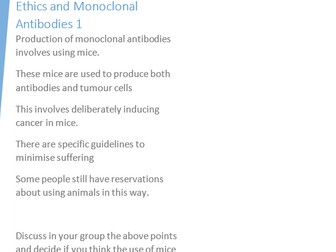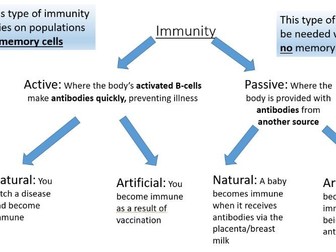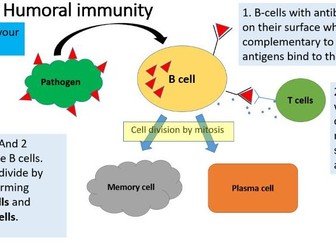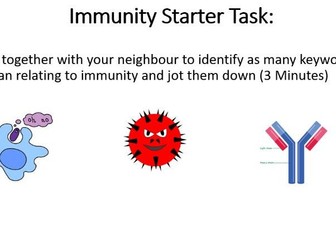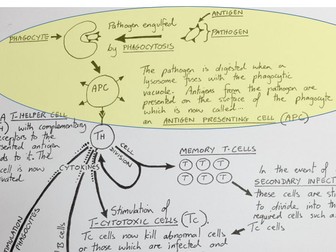
Monoclonal Antibodies and Ethics: Lesson 6 Immunity
Students learn to explain how the specificity of monoclonal antibodies enables them to be used, and they study the example of a pregnancy test and also targeting of medication to cancerous cells. The lesson also provides a great opportunity to discuss ethical issues associated with the use of monoclonal antibodies.
Lesson summary:
6 mark revision question on vaccines with mark scheme and advice about a common pitfall
Introduction to key term: monoclonal antibodies (v polyclonal)
Students invited to consider the advantages of targeting of medication to cancerous cells (using monoclonal antibodies) over chemotherapy
Students study some text and a diagram which explains how pregnancy tests work, they then have to recall these steps with only use of the diagram
Gap fill task (can be printed from the powerpoint slide) with solution, to consolidate learning so far
Group work discussion task: Students presented with 4 dilemmas and some light scaffolding to assist them with a group discussion, and they record their reflections on the printed sheets.
Teacher feedback and group discussion
Resources also include an abbreviated version of the lesson on paper, which could be used or adapted as a cover lesson
